
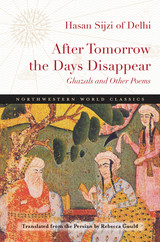
Hasan Sijzi, also known as Amir Hasan Sijzi Dehlavi, is considered the originator of the Indo-Persian ghazal, a poetic form that endures to this day—from the legacy of Hasan’s poetic descendent, Hafez, to contemporary Anglophone poets such as John Hollander, Maxine Kumin, Agha Shahid Ali, and W. S. Merwin.
As with other Persian poets, Hasan worked within a highly regulated set of poetic conventions that brought into relief the interpenetration of apparent opposites—metaphysical and material, mysterious and quotidian, death and desire, sacred and profane, fleeting time and eternity. Within these strictures, he crafted a poetics that blended Sufi Islam with non-Muslim Indic traditions. Of the Persian poets practiced the ghazal, Hafez and Rumi are best known to Western readers, but their verse represents only a small fraction of a rich tradition. This collection reveals the geographical range of the literature while introducing an Indian voice that will find a place on reader’s bookshelves alongside better known Iranian names.
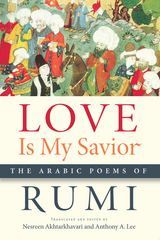
This dual-language volume opens a treasury of Rumi’s mystic thought and startling poetry. His verses pulsate with desire and longing, with sensuality, and with ecstatic celebration. Rumi found in his mystic poetry a vehicle for the expression of the endless spiritual bounties of love. He placed love at the center of his faith and doctrine, and he pronounced it to be the goal of his life and the only form of true worship. This collection is stunningly rendered in English by an award-winning poet and a distinguished translator of Arabic poetry.
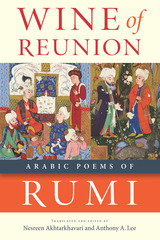
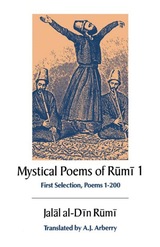
"An excellent introduction to Rumi, the greatest mystical poet of Islam. . . . Rumi's scope, like that of all great poets, is universal—reaching from sensuous luxuriance to the driest irony."—Sherman Goldman, East-West Journal
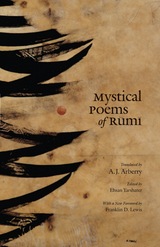
Devour it the moment it is fresh, before the dust settles upon it.
Its place is the warm climate of the heart; in this world it dies of cold.
Like a fish it quivered for an instant on dry land, another moment and you see it is cold.
Even if you eat it imagining it is fresh, it is necessary to conjure up many images.
What you drink is really your own imagination; it is no old tale, my good man.
“Rumi is one of the world’s greatest lyrical poets in any language—as well as probably the most accessible and approachable representative of Islamic civilization for Western students.”—James W. Morris, Oberlin College

Widely regarded as the Shakespeare of Persia, Bahram Beyzaie—playwright, director, screenwriter, and scholar—has made the greatest contribution to modern Persian drama of any individual artist, yet he remains largely unknown to the English-speaking world. In this volume, Richard Saul Chason and Nikta Sabouri have translated for the first time into English Beyzaie’s complete Naqqali Trilogy, one of the dramatist’s greatest masterpieces and a pinnacle work of twentieth-century world drama.
Blending modes of traditional Iranian storytelling and mythological ritual with contemporary dramatic philosophy and technique, the Naqqali Trilogy is a cycle of three works of mythological revisionism. It celebrates a renaissance of Persian cultural tradition while reframing ancient tales into a modern psychodrama of outcasts and oppression in a land of tyranny and injustice. This volume also includes a detailed introduction that provides background information on Beyzaie, the mythological basis of the plays, the nature of the plays in performance, and on the plays’ distinctive employ of the Persian language and the replication of the dramatic prose poetry into an English equivalent.
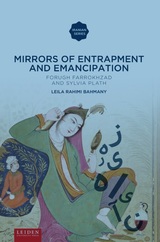
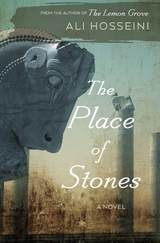
The Place of Stones is Ali Hosseini’s newly translated first novel, his second book to appear in English. In it, he paints a vivid portrait of Sangriz, a village in the southern part of Iran where life has been disrupted by industrialization and the revolution of 1979.
Haydar and Jamal are best friends, and their families have always made their living from the land in the foothills of Iran’s Zagros Mountains. Haydar is a dreamer who searches the hills for an ancient treasure called the Black Globe. Jamal is in love with Haydar’s sister, Golandam, and he attempts to accommodate himself to modernization as a way to create a better life for the two of them. The rapacious conversion of farmland to brick factories draws the trio into escalating conflict with the village landlord.
As Jamal, Haydar, and their families confront land reform, industrialization, revolution, and war, their lives are pulled forcefully toward the explosive events that will change them all. In masterfully crafted prose that never sinks into sentimentality, The Place of Stones illuminates how a lost past continues to shape the present.
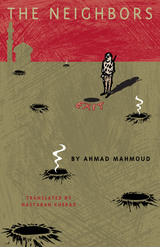
Ahmad Mahmoud sets The Neighbors against the backdrop of the oil nationalization crisis that gripped Iran in the early 1950s. His protagonist, Khaled, a young man from a rundown neighborhood in Ahvaz, a city in southern Iran, becomes involved in the struggle to wrest Iran’s oil industry from the British and, as the result of his political activities, comes to realize that there is more to life than the drudgery and poverty his parents and neighbors have experienced.
The Neighbors, published in 1974, cemented Mahmoud’s reputation as a novelist and captured the ethos of a generation—the generation that laid the groundwork for those who continue to struggle for democracy in Iran today. Though the novel received considerable praise and was read widely, its political nature earned the ire of Mohammad Reza Shah’s regime, and the Islamic Republic has objected to its sexually explicit content. This is the first time one of Ahmad Mahmoud’s novels has appeared in English translation.

Mirror of Dew introduces one of Iran's outstanding female poets, whose work has not previously been available in English. Zhāle Qā'em-Maqāmi (1883-1946) was a witness to pivotal social and political developments in Iran during its transition to modernity. Persian poetry at that time was often used polemically and didactically, for a mass audience, but Zhāle did not write to be published. The poems, like the mirror, samovar, and other familiar objects we find in them, appear to be the author's intimate companions.
Her poetry is deeply personal but includes social critique and offers a rare window into the impact of a modern awareness on private lives. Zhāle is biting in her condemnation of traditional Persian culture, and even of aspects of Islamic law and custom. She might be called the Emily Dickinson of Persian poetry, although Zhāle was married, against her will. Zhāle is far from the first female poet in Persian literature but is the first we know of to write with an interior, intimate voice about private life, her anxieties, her frustrated love, her feelings about her husband, and many topical issues. This volume presents the Persian text of Zhāle's poems on pages facing the English translations.
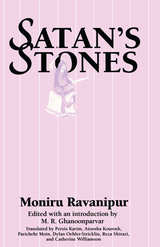
Women writers occupy prominent positions in late 20th century Iranian literature, despite the increased legal and cultural restrictions placed upon women since the 1978-1979 Islamic Revolution. One of these writers is Moniru Ravanipur, author of the critically acclaimed The Drowned and Heart of Steel.
Satan's Stones is the first English translation of her 1991 short story collection Sangha-ye Sheytan. Often set in the remote regions of Iran, these stories explore many facets of contemporary Iranian life, particularly the ever-shifting relations between women and men. Their bold literary experimentation marks a new style in Persian fiction akin to "magical realism."
Reports from Iran indicated that Satan's Stones had been banned there by government authorities. While its frank explorations of Iranian society may have offended Islamic leaders, they offer Western readers fresh perspectives on Iranian culture from one of the country's most distinguished writers.
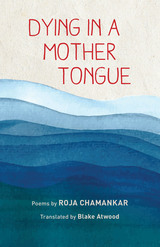
This collection of poetry by the celebrated southern Iranian poet and filmmaker Roja Chamankar (b. 1981) introduces English-speaking readers to one of the most accomplished and well-loved poets of her generation. Chamankar’s work blends surrealism and the southern coastal landscape of the poet’s upbringing with everyday experiences in rapidly urbanizing Tehran. While locating herself in the modernist tradition of Iranian poets like Forugh Farrokhzad and Ahmad Shamlu through form and imagery, Chamankar infuses this tradition with concerns unique to a generation that grew up in post-revolutionary Iran and endured the effects of the Iran-Iraq war. Seascapes, love and eroticism, the disconnection of modern life, and myths and fairytales figure prominently in these vivid, lyrical poems.
In the rich miniature worlds of Chamankar’s poetry, readers become privy to a range of experiences, from desire and pain to rage and humor. Sometimes abstract, other times surreal—Chamankar’s unique poetic voice, like the sea she returns to again and again, combines and sweeps these experiences to shore with assurance, strength, and beauty.
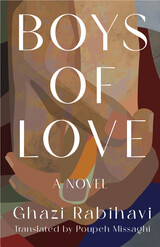
In Boys of Love, Ghazi Rabihavi offers both a universal story about the ups and downs of all relationships and a clear-eyed portrait of same-sex desire in Iran, where homosexuality remains punishable by death. Banned in Iran, the novel was initially published in Farsi in the UK, then translated into French and shortlisted for the Prix Médicis étranger. Rabihavi avoids both lasciviousness and exoticism in depicting a deep love between male characters living through the Iranian Cultural Revolution. Ultimately, this story challenges preconceived notions about marginalized communities in the Middle East.
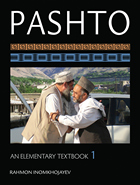
eTextbooks are now available to purchase or rent through VitalSource.com! Please visit VitalSource for more information on pricing and availability.
Pashto, designated a critical language by the US Department of Defense, is one of two official languages of Afghanistan and is also spoken in parts of Pakistan. Volume 1 of Pashto: An Elementary Textbook is designed to cover one semester of beginning-level language instruction; together, Volumes 1 and 2 of Pashto cover one year of instruction. The textbook provides learners and instructors with a wide selection of task-oriented, communicative language materials to facilitate the development of language learning. It features a functional approach to grammar, an emphasis on integrated skills development, and the use of authentic materials.
The activities provided in the textbook will help learners to develop strong skills in speaking, listening, reading, and writing. In addition to the cultural background embedded in the video materials, the textbook contains cultural notes that improve competency.
Volumes 1 and 2 of Pashto: An Elementary Textbook each include:• Authentic audio and video materials to accompany the text, available on the Press website• Extensive Pashto–English and English–Pashto glossaries• Material for teaching the Arabic-based Pashto alphabet • Color illustrations and photographs throughout
Topics coveredVolume 1 (first semester): The Pashto alphabet, writing, reading, pronunciation, greetings and introductions, university life, daily activities, in the city, and family
Volume 2 (second semester): Seasons, weather, holidays, health, food, sport, and shopping
For Instructors: Exam copies of the textbook are available free of charge to instructors and can be ordered on this page. To request a print sample, please use the "print" exam copy button. Instructors may request a digital sample by logging into VitalSource.com, selecting "Faculty Sampling" in the upper right-hand corner, and selecting the desired product.
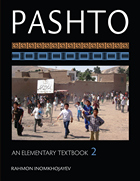
eTextbooks are now available to purchase or rent through VitalSource.com! Please visit VitalSource for more information on pricing and availability.
Pashto, designated a critical language by the US Department of Defense, is one of two official languages of Afghanistan and is also spoken in parts of Pakistan. Volume 2 of Pashto: An Elementary Textbook is designed to cover the second semester of beginning-level language instruction; together, Volumes 1 and 2 of Pashto cover one year of instruction. The textbook provides learners and instructors with a wide selection of task-oriented, communicative language materials to facilitate the development of language learning. It features a functional approach to grammar, an emphasis on integrated skills development, and the use of authentic materials.
The activities provided in the textbook will help learners to develop strong skills in speaking, listening, reading, and writing. In addition to the cultural background embedded in the video materials, the textbook contains cultural notes that improve competency.
Volumes 1 and 2 of Pashto: An Elementary Textbook each include:• a CD-ROM featuring authentic audio and video materials to accompany the text• extensive Pashto–English and English–Pashto glossaries• material for teaching the Arabic-based Pashto alphabet • color illustrations and photographs throughout
Topics coveredVolume 1 (first semester): The Pashto alphabet, writing, reading, pronunciation, greetings and introductions, university life, daily activities, in the city, and family
Volume 2 (second semester): Seasons, weather, holidays, health, food, sport, and shopping
For Instructors: Exam copies of the textbook are available free of charge to instructors and can be ordered on this page. To request a print sample, please use the "print" exam copy button. To request a digital sample, instructors should log onto VitalSource.com, select "Faculty Sampling" in the upper right-hand corner, and select the desired product.

Designated a critical language by the US Department of Defense, Pashto is one of the two official languages of Afghanistan and is commonly spoken in parts of Pakistan. This intermediate-level textbook, which follows Pashto: An Elementary Textbook, Volumes 1 and 2, is designed to bring students from high-introductory to intermediate proficiency. It offers students with basic knowledge of Pashto a thematically organized approach that develops strong speaking, listening, reading, and writing skills in the language used in everyday life and in official communications, the mass media, and the educational system of Afghanistan.
Utilizing current innovations in foreign language teaching, Pashto: An Intermediate Textbook is an invaluable resource for professionals and students wishing to improve their proficiency in this critical language.
Features of Pashto: An Intermediate Textbook:• More than a hundred audio files, available to stream on the Press website. Vocabulary lists allow readers to hover over a written word or phrase and hear it in both eastern and western dialects.• Carefully selected themes, including practical situations in survival and rich descriptions of the Pashtun code of honor and wedding customs, in order to help students learn the language within its cultural context.• Grammar points that help students quickly master the essential function of the structural elements used in the texts.• Pashto-English and English-Pashto glossaries that provide information regarding the gender and number of nouns, adjectives, and various forms of verbs.• Attractive four-color, user-friendly design with integrated audio and written exercises and cultural notes to provide students with necessary background.
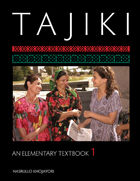
Tajiki, a variety of modern Persian spoken in Central Asia, is the official language of Tajikistan; most speakers of Tajiki live in Tajikistan and Uzbekistan. Volume 1 of Tajiki: An Elementary Textbook is designed to cover the first semester of beginning-level language instruction; together, Volumes 1 and 2 of Tajiki cover one year of instruction. Each volume of Tajiki: An Elementary Textbook uses the latest pedagogical thinking to teach basic communication skills and linguistic forms in their cultural context. Tested in the classroom, Tajiki enhances students' exposure to the language by providing the only authentic video and audio available in Tajiki. Each volume contains a CD-ROM that includes authentic audio and video materials to accompany the text and extra exercises, all in Flash format and all of which are keyed to the textbook. Each book also includes an extensive glossary, maps of the world labeled in Tajiki, and four-color illustrations and photographs throughout.
Topics CoveredVolume One (first semester): Greetings, the Tajiki alphabet, the classroom, professions, introductions, nationalities and places of origin, weather, telling time, family, money, food
Volume Two (second semester): Sports, cooking and ordering meals, clothing, travel, months, seasons, holidays, body parts, medicine, university life, housing (city and village), regions and religions of Tajikistan
Minimum System Requirements
• Intel Pentium II 450 MHz or faster processor (or equivalent); Mac OS 10.4 or higher• 128 MB of RAM• CD Drive• Speakers or headphones
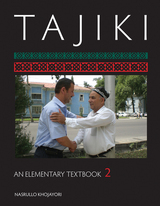
Enhances students’ exposure to the language, providing the only authentic multimedia available in Tajiki
Tajiki, a variety of modern Persian spoken in Central Asia, is the official language of Tajikistan; most speakers of Tajiki live in Tajikistan and Uzbekistan. Volume 2 of Tajiki: An Elementary Textbook is designed to cover the second semester of beginning- or lower-intermediate-level language instruction; together, Volumes 1 and 2 of Tajiki cover one year of instruction. Each volume of Tajiki: An Elementary Textbook uses the latest pedagogical thinking to teach basic communication skills and linguistic forms in their cultural context. Tested in the classroom, Tajiki enhances students’ exposure to the language by providing the only authentic video and audio available in Tajiki.
Each volume includes-Authentic audio and video materials to accompany the text, available for free on GUPTextbooks.com-An extensive glossary-Maps of the world labeled in Tajiki-Color illustrations and photographs throughout
Topics Covered
Volume One (first semester): Greetings, the Tajiki alphabet, the classroom, professions, introductions, nationalities and places of origin, weather, telling time, family, money, food
Volume Two (second semester): Sports, cooking and ordering meals, clothing, travel, months, seasons, holidays, body parts, medicine, university life, housing (city and village), regions and religions of Tajikistan
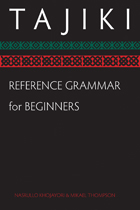
Tajiki Reference Grammar for Beginners features straightforward explanations of Tajiki grammar and pronunciation along with examples of the concepts.
This handy reference grammar is designed for beginning-level language students and—although keyed to both volumes of Tajiki: An Elementary Textbook and a natural resource for students using those textbooks—it is also useful to scholars and students of Central Asian languages and linguistics who wish to learn more about Tajiki.
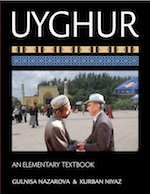
The Uyghurs are one of the oldest Turkic-speaking peoples of Central Asia. Their language is closely related to Uzbek, with which it shares a common ancestor. Modern Uyghur is spoken by about 11 million people in Xinjiang and 2 million people in Central Asia and elsewhere. This textbook offers beginning students a thematically organized and integrative approach to the Uyghur language that emphasizes communicative activities, step-by-step development of linguistic skills, and elements of Uyghur culture. A multimedia DVD includes audio that helps develop listening and speaking skills and videos filmed in different regions of Xinjiang, China.
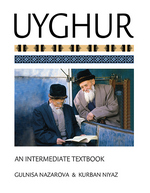
Uyghur: An Intermediate Textbook offers students, professionals, and travelers alike the preeminent tool for expanding their knowledge of the Uyghur language and culture. Combining innovative language learning methodology with authentic audio and video materials, this textbook develops the four primary language skills—speaking, listening, reading, and writing—by integrating them into a clear, balanced whole.
Uyghur: An Intermediate Textbook prepares learners to perform at level 1+/2 or 2+ on the ILR scale and at the Intermediate High to Advanced Mid/High levels on the ACTFL scale.
Features include:
* A multimedia CD that contains videos filmed on location as well as both authentic and scripted audio segments, all highlighting key elements of Uyghur culture
* Authentic original and modified reading passages ranging from short stories to news articles to menus
* Abundant cultural notes to reinforce reading, grammar, and vocabulary skills
* Easy-to-understand examples and exercises on points of Uyghur grammar
* Chapter themes that facilitate immersion in daily Uyghur life and culture
Designed for both classroom and on-the-ground learners, and developed in accordance with the latest ideas in performance-based principles and methodology, Uyghur: An Intermediate Textbook guides readers on a journey to the heart of a fascinating culture.
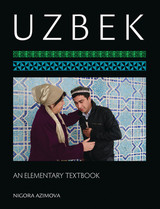
Designed to cover beginning college levels of language instruction, Uzbek: An Elementary Textbook provides learners and instructors with a wide selection of materials and task-oriented activities to facilitate the development of language learning. It offers a thematically organized and integrative approach to the Uzbek language and its culture, including a functional approach to grammar, an emphasis on integrated skills development, and the use of authentic materials such as videos filmed in various regions of Uzbekistan.
This volume includes -authentic audio and video materials, available for free on GUPTextbooks.com-an extensive glossary-color illustrations and photographs throughout Topics CoveredThe Uzbek alphabet, greetings and introductions, commands and requests, daily routines, etiquette, weather, family, money, food, clothing, travel, leisure, and medical matters.
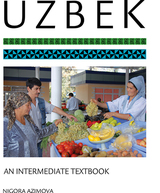
Using a wide selection of materials and task-oriented activities drawn from realistic situations and contexts, Uzbek: An Intermediate Textbook, is designed to help adult professional and higher education learners deepen their understanding of the Uzbek language, culture, and its people. Learners will develop listening, reading, speaking, and writing skills, with special attention to grammatical accuracy. With a variety of texts, audio clips, videos, and activities, this textbook will encourage learners to explore Uzbek culture and to compare and contrast it with their own.
Uzbek: An Intermediate Textbook prepares learners to perform at level 1+ or 2 on the ILR scale and at the Intermediate High or Advanced Low level on the ACTFL scale.
Features of Uzbek: An Intermediate Textbook:-Topics covered include work, study, personal interests, and travel.-Authentic audio and video materials to accompany the text, available for free on GUPTextbooks.com-The book uses the Cyrillic alphabet—the alphabet used in current government reports and the mass media as well as in archival material from the Soviet era.-A useful appendix compares the Cyrillic alphabet with the Latin alphabet.-Uzbek-English and English-Uzbek glossaries facilitate vocabulary acquisition.

Kazakh, a Turkic language that uses Cyrillic script, is the official state language of Kazakhstan and is also spoken by people in parts of China, Russia, and neighboring Central Asian countries. This unique learner’s dictionary features simple definitions, literal translations, English equivalents, full example sentences, and grammar and usage for over 2,000 Kazakh idioms.
As students progress to the upper-intermediate and advanced levels of language learning, they come in contact with cultural concepts embedded in simple words that they have learned as part of everyday vocabulary. Thus, they expand their vocabulary into idiomatic expressions. Upper-intermediate and advanced learners of Kazakh will find this extensive reference work useful to understand those culturally bound idioms.
Idioms in this reference volume are organized into categories—the human body, food, clothing, color, number, animals, and nature—that best represent the topics on which language learners focus at the beginning and intermediate levels of language study. Five indexes make finding the idiom you want—by idiom, keyword, or expression in both Kazakh and English—easier.

One of the keys to learning the Turkish language is to understand the importance and function of the verb. The stem of the verb, together with various suffixes of mode, tense, person, along with a subject and/or object, may be the equivalent of an entire English sentence. A Dictionary of Turkish Verbs is an aid to both the beginning and more advanced student of the language by providing approximately 1,000 verbs in context as they appear in up-to-date colloquial Turkish phrases and sentences, or short dialogues in translation.
Contrasting English and Turkish ways of expression, this multipurpose dictionary also helps the English speaker avoid the most common errors—with most verbs cross-referenced to related verbs, synonyms, or antonyms, and to the broader themes or categories of meaning to which they belong. Includes an English-Turkish index and a thesaurus section (using Roget's categories) where verbs of related meaning appear together and a short reference list of verb-forming suffixes. For students at any stage of learning the Turkish language, or for the self-motivated traveler, this unique dictionary will help open the door to greater understanding in an increasingly important area of the world.
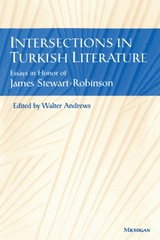
Intersections in Turkish Literature is a collection of essays on Turkish literature by former students of James Stewart-Robinson. The topics and methods cover a broad range--from a careful thematic analysis of a traditional Turkish folktale, which reveals its resemblance to well-known Western tales; to an analysis of the "saint tales" recounted by present-day Albanian Bektasi adepts; to a study of narrative rhythm in Nazim Hikhmet's rendition of an account of a fifteenth-century popular uprising.
Walter G. Andrews has assembled the writings of a number of scholars who bridge traditional chasms, inviting us to rethink our approaches to the study of Turkish and Ottoman literature. This collection forms a nucleus that clearly demonstrates the great potential now existing for study in this area, the essays displaying a variety of unusual approaches that bring together seemingly disparate materials: the Turkish story "The Pomegranate Seed" and Disney's "Snow White"; a fifteenth-century chronicle and the poetry of a modern socialist poet; Albanian dervishes in Detroit; a modern Turkish novel; Virginia Woolf; a Yale critic; traditional Japanese poetry; and Ottoman lyrics.
Intersections in Turkish Literature will provide an important stimulus to work that reaches beyond the limits of area studies, intersecting with the interests of scholars and students of literary theory, folklore studies, anthropology, French, Japanese, and Persian.
Walter G. Andrews is Affiliate Professor of Near Eastern Languages and Civilization, University of Washington.
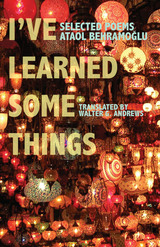
I've Learned Some Things allows English-language readers the rare opportunity to experience the work of Ataol Behramoğlu, one of Turkey's most celebrated poets. The sixty-six poems in this collection span the author's extraordinary career and are stunning examples of the intense emotional quality of his work. Behramoğlu celebrates the rich fabric of everyday life by exploring both personal and social struggles, sometimes employing a whimsical tone.
Walter G. Andrews's skillful translation conveys the vibrancy of Behramoğlu's work to an English-language audience, and this bilingual edition allows Turkish-language readers to follow the original text.
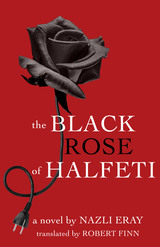
The Black Rose of Halfeti opens with a letter delivered at midnight in Ankara, Turkey. In this letter, an elderly doctor who has begun to experience the first signs of dementia professes his love and desire for a relationship with the narrator, a woman in middle age beginning to contemplate her own mortality. From there, the novel moves between Mardin, Izmir, and Ankara; the past and the present; and the real and the imagined as the narrator seeks to know the doctor both in his prime and in his struggle to hold senility at bay. In these dreamlike landscapes, the author effortlessly introduces King Darius, the Spanish director Luis Buñuel, the actress Silvia Pinal, and the archetypal dream woman as the narrator’s guides in her efforts to understand the human psyche.
Nazli Eray has established herself as a master of magical realism, the perfect tool to bring to life this poignant meditation on love, aging, and the role of memory. And, as in her earlier novels, she paints vivid images of the urban landscapes of Turkey, capturing both the present and the past.
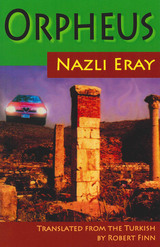
Robert Finn's translation of Turkish author Nazli Eray's Orphée makes available to the English-language reader a rewriting of the myth from the perspective of Eurydice, the wife of Orpheus. Eray's surrealistic version takes place in a hot resort town in contemporary Turkey. The setting of an archaeological dig gives a connection to the past and literally to the underworld. Found in the dig is a statue of the Roman emperor Hadrian, who proceeds to offer an unusual perspective on modern life and values through mysterious letters carried by a messenger pigeon. Eray also comments on modernity, as the city of Ankara emerges as a character in the novel's fantasy. Set in junta-ruled Turkey of the 1980s, the novel takes its place as a crucial slice of Turkish literary history.
Resonating with haunting references to the film Last Tango in Paris, the novel evolves as a mystery story with a humorous bent. Thus Eray illuminates her insatiable curiosity about other cultures, particularly those of the West. Finally, the style of the translation is simple and clear, with crisp dialogue. Sibel Erol, professor of Turkish literature at New York University, has written an introduction that places this fantastic plot in a literary context, as well as in understandable terms that relate to the reality of today's Turkey.
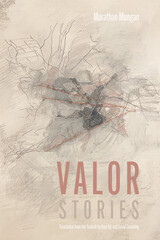
Among Murathan Mungan’s signature works, Cenk Hikâyeleri (Valor: Stories) has long been considered a milestone of twentieth-century Turkish literature. The six short stories in the collection reflect the author’s multiethnic background (which includes Kurdish, Arab, and Turkish heritage) and represent his lush poetics, literary breadth, and sociopolitical commitments.
Valor reimagines Shahmaran, a mythical half‑human, half‑snake figure that commonly appears in the folklore of Turkey’s southeastern provinces. Legend interweaves with the contemporary realities of ethnicity, religious dogma, gender, and sexuality. Uncovering hidden narratives within a rich and complicated culture, Mungan’s stories depict self-realization and sexual awakening as they showcase one of Turkey’s most popular literary voices.
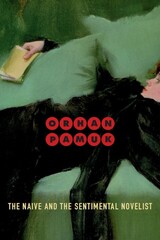
What happens within us when we read a novel? And how does a novel create its unique effects, so distinct from those of a painting, a film, or a poem? In this inspired, thoughtful, deeply personal book, Orhan Pamuk takes us into the worlds of the writer and the reader, revealing their intimate connections.
Pamuk draws on Friedrich Schiller’s famous distinction between “naive” poets—who write spontaneously, serenely, unselfconsciously—and “sentimental” poets: those who are reflective, emotional, questioning, and alive to the artifice of the written word. Harking back to the beloved novels of his youth and ranging through the work of such writers as Tolstoy, Dostoevsky, Stendhal, Flaubert, Proust, Mann, and Naipaul, he explores the oscillation between the naive and the reflective, and the search for an equilibrium, that lie at the center of the novelist’s craft. He ponders the novel’s visual and sensual power—its ability to conjure landscapes so vivid they can make the here-and-now fade away. In the course of this exploration, he considers the elements of character, plot, time, and setting that compose the “sweet illusion” of the fictional world.
Anyone who has known the pleasure of becoming immersed in a novel will enjoy, and learn from, this perceptive book by one of the modern masters of the art.
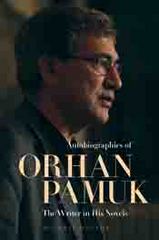
"Pamuk is a writer who shares my reverence for the great art of the novel. He takes the novel seriously in a way that is perhaps no longer possible for Western writers, boldly describing it as European civilization’s greatest invention."—Michael McGaha
Turkish novelist Orhan Pamuk is a prominent voice in Turkish literature, speaking to the country’s history, culture, and politics. In 2006, he became the first Turkish writer to receive the Nobel Prize for Literature.
Autobiographies of Orhan Pamuk is the first book-length study of the life and writings of Pamuk. It provides both a historical and cultural context that will help readers better understand and appreciate both the man and his work. It begins with a brief biography, outlines Pamuk’s contributions to Turkish literature and history, examines how his art has evolved over the past thirty years, and discusses some of the writers who provided inspiration. Though his books deal with specifically Turkish issues, like all great literature the themes they explore are universal. In addition to a thorough analysis of his seven published novels, including Snow and My Name is Red, an entire chapter is devoted to his first two novels, Cevdet Bey and Sons and The Silent House, which have yet to be translated into English.
This is a comprehensive examination of the Nobel laureate’s work, free of jargon and of interest to anyone who enjoys good literature.
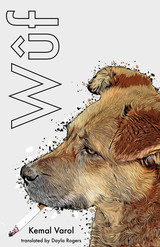
Told through the voice of a canine narrator, Wûf is a surrealist wartime love story set in Turkey in the 1990s. The novel follows Mikasa, a street dog who recounts a tale of tragic wartime love at a kennel where he finds solace in storytelling and cigarettes. A book that took the Turkish literary world by storm, Kemal Varol’s Wûf tackles universal themes of love and loss with both humor and pathos. Translated by PEN/Heim Award winner Dayla Rogers, the novel renders in English a one-of-a-kind love story with a narrator its readers won’t soon forget.
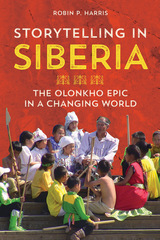
Drawing on her ten years of living in the Russian North, Robin P. Harris documents how the Sakha have used the Masterpiece program to revive olonkho and strengthen their cultural identity. Harris’s personal relationships with and primary research among Sakha people provide vivid insights into understanding olonkho and the attenuation, revitalization, transformation, and sustainability of the Sakha’s cultural reemergence. Interdisciplinary in scope, Storytelling in Siberia considers the nature of folklore alongside ethnomusicology, anthropology, comparative literature, and cultural studies to shed light on how marginalized peoples are revitalizing their own intangible cultural heritage.

Jerry Norman’s Comprehensive Manchu-English Dictionary, a substantial revision and enlargement of his Concise Manchu-English Lexicon of 1978, now long out of print, is poised to become the standard English-language resource on the Manchu language. As the dynastic language of the Qing dynasty (1644–1911), Manchu was used in official documents and was also the vehicle for an enormous translation literature, mostly from the Chinese. The new Dictionary, based exclusively on Qing sources, retains all of the information from the earlier Lexicon, but also includes hundreds of additional entries cited from original Manchu texts, enhanced cross-references, and an entirely new introduction on Manchu pronunciation and script. All content from the earlier publication has also been verified.
This final book from the preeminent Manchu linguist in the English-speaking world is a reference work that not only updates Norman’s earlier scholarship but also summarizes his decades of study of the Manchu language. The Dictionary, which represents a significant scholarly contribution to the field of Inner Asian studies and to all students and scholars of Manchu and other Tungusic and related languages around the world, will become a major tool for archival research on Chinese late imperial period history and government.
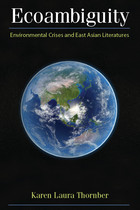
Ecoambiguity is the first book in any language to analyze Chinese, Japanese, Korean, and Taiwanese literary treatments of damaged ecosystems. Thornber closely examines East Asian creative portrayals of inconsistent human attitudes, behaviors, and information concerning the environment and takes up texts by East Asians who have been translated and celebrated around the world, including Gao Xingjian, Ishimure Michiko, Jiang Rong, and Ko Un, as well as fiction and poetry by authors little known even in their homelands. Ecoambiguity addresses such environmental crises as deforesting, damming, pollution, overpopulation, species eradication, climate change, and nuclear apocalypse. This book opens new portals of inquiry in both East Asian literatures and ecocriticism (literature and environment studies), as well as in comparative and world literature.
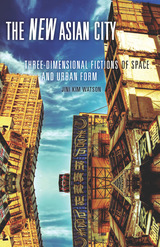
Under Jini Kim Watson’s scrutiny, the Asian Tiger metropolises of Seoul, Taipei, and Singapore reveal a surprising residue of the colonial environment. Drawing on a wide array of literary, filmic, and political works, and juxtaposing close readings of the built environment, Watson demonstrates how processes of migration and construction in the hypergrowth urbanscapes of the Pacific Rim crystallize the psychic and political dramas of their colonized past and globalized present.
Examining how newly constructed spaces—including expressways, high-rises, factory zones, department stores, and government buildings—become figured within fictional and political texts uncovers how massive transformations of citizenries and cities were rationalized, perceived, and fictionalized. Watson shows how literature, film, and poetry have described and challenged contemporary Asian metropolises, especially around the formation of gendered and laboring subjects in these new spaces. She suggests that by embracing the postwar growth-at-any-cost imperative, they have buttressed the nationalist enterprise along neocolonial lines.
The New Asian City provides an innovative approach to how we might better understand the gleaming metropolises of the Pacific Rim. In doing so, it demonstrates how reading cultural production in conjunction with built environments can enrich our knowledge of the lived consequences of rapid economic and urban development.
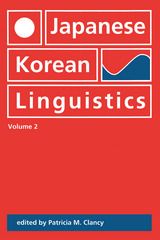
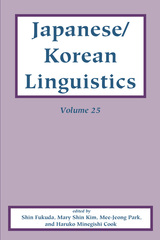
Japanese and Korean are typologically similar, with linguistic phenomena in one often having counterparts in the other. The Japanese/Korean Linguistics Conference provides a forum for research, particularly through comparative study, on both languages. The papers in this volume are from the twenty-fifth conference, which was held at the University of Hawai’i at Mānoa. They include essays on the phonology, morphology, syntax, semantics, historical linguistics, discourse analysis, prosody, and psycholinguistics of both languages. Such comparative studies deepen our understanding of both languages and will be a useful reference for students and scholars in either field.
READERS
Browse our collection.
PUBLISHERS
See BiblioVault's publisher services.
STUDENT SERVICES
Files for college accessibility offices.
UChicago Accessibility Resources
home | accessibility | search | about | contact us
BiblioVault ® 2001 - 2024
The University of Chicago Press









